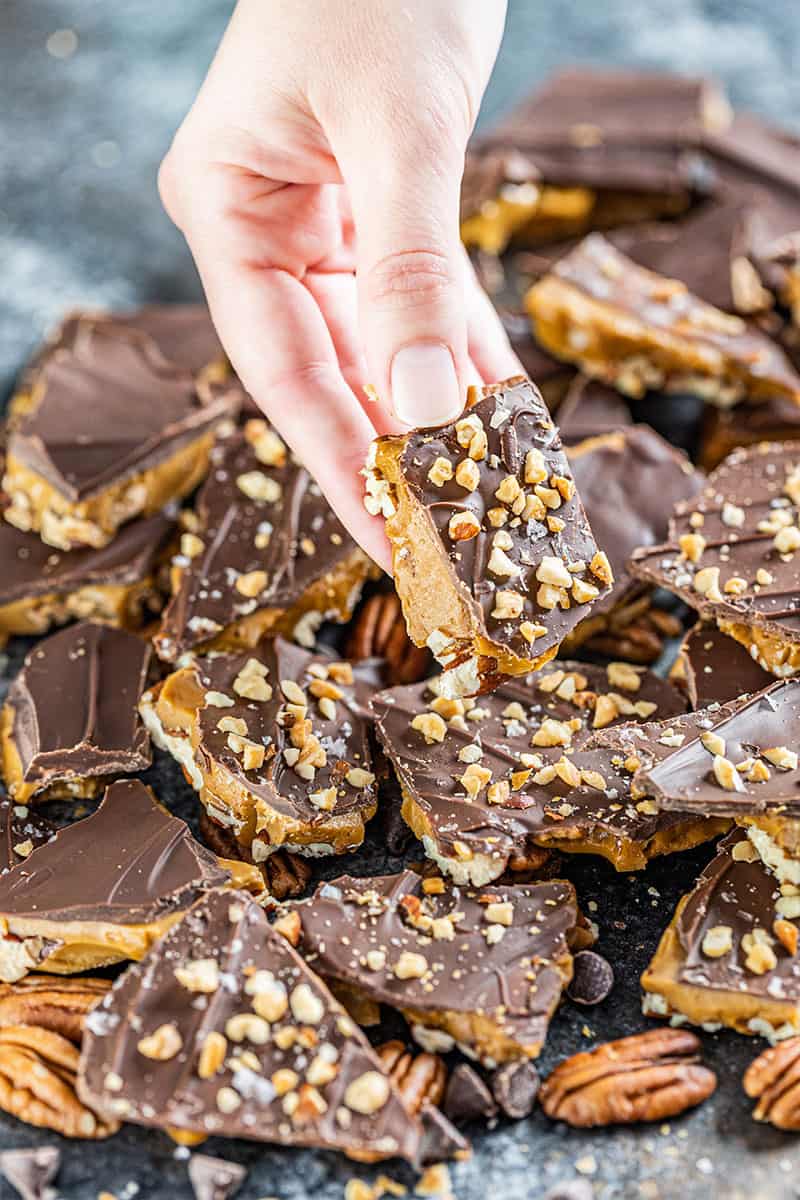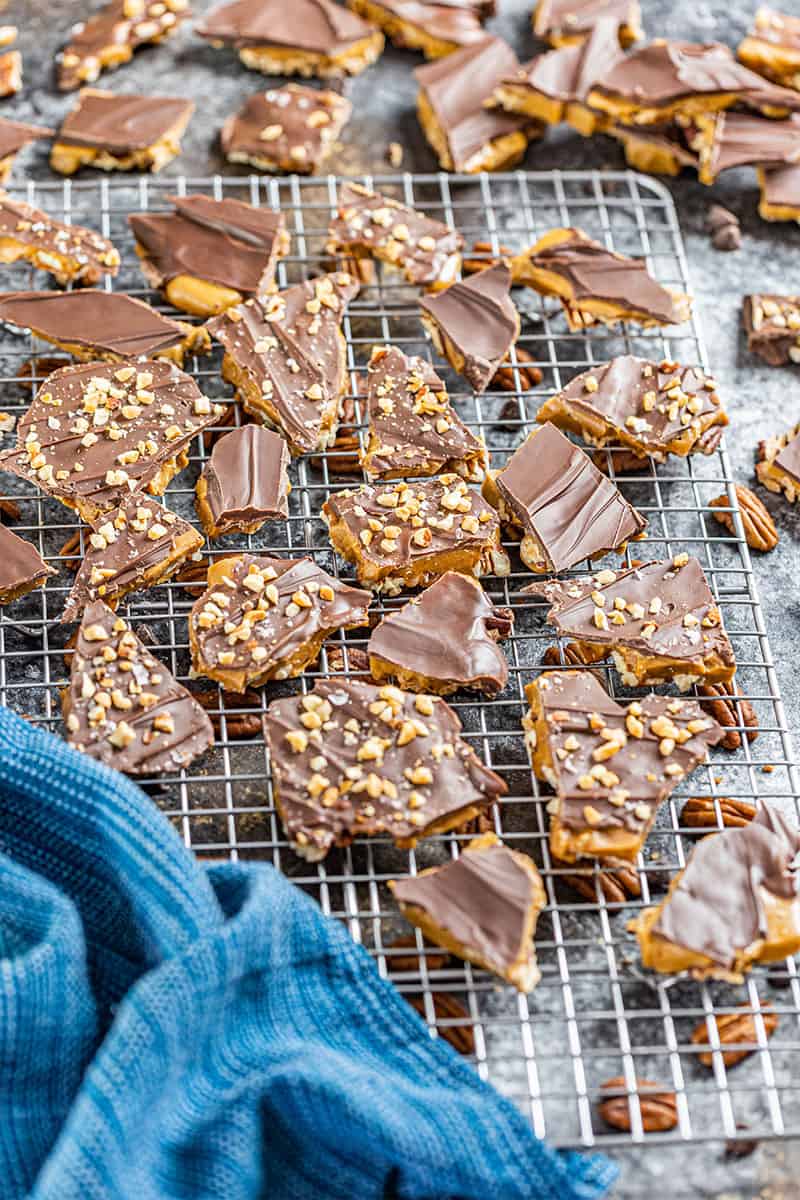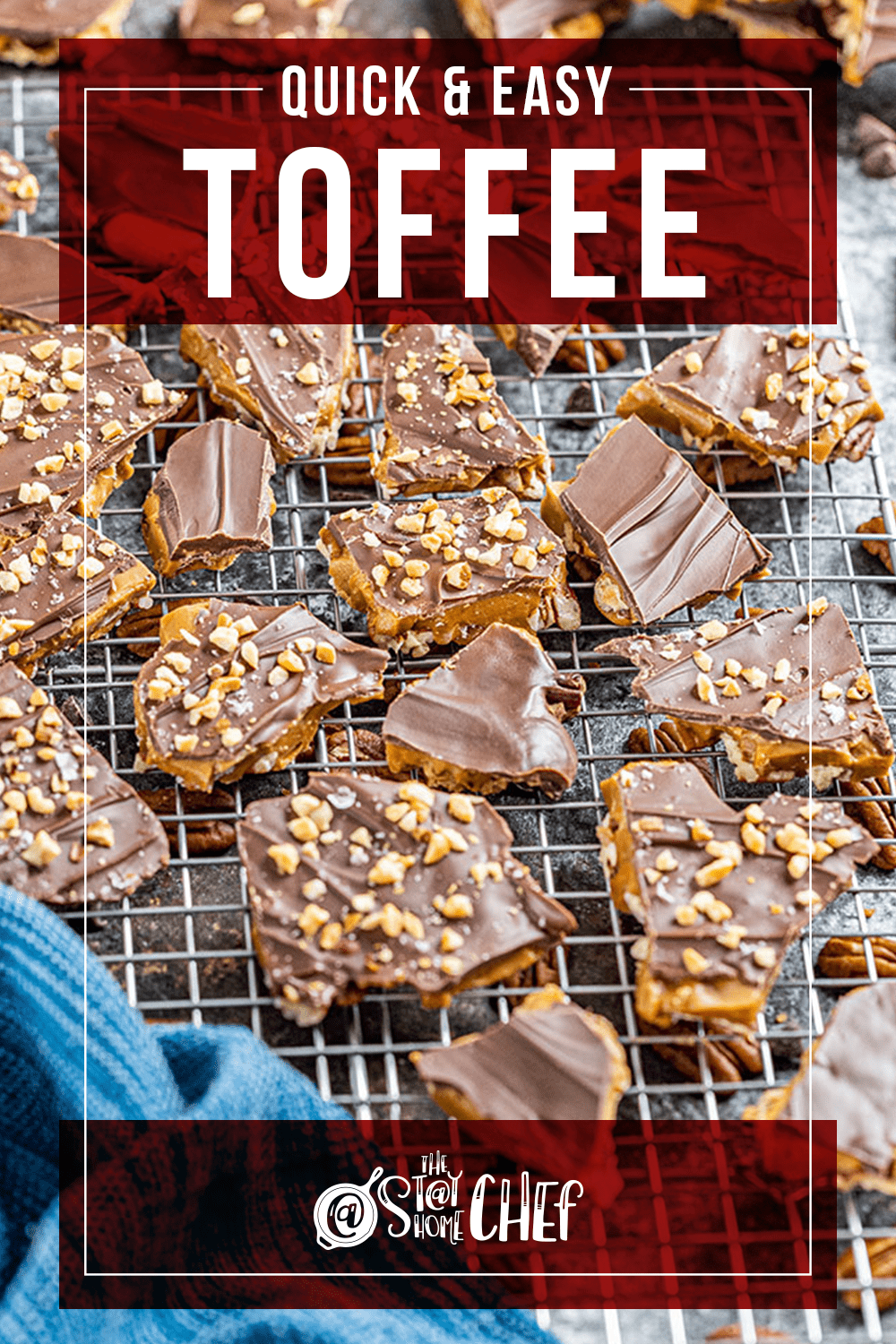What is English Toffee?
Toffee has different names in different countries. In the United States, most toffee is known as English Toffee. Where it can get confusing however, is that traditional English Toffee does not contain any nuts, yet English Toffee in the United States can contain a variety of nuts. The moral of the story is to always check toffee labels to make sure you’re getting the toffee you want.
Nuts in Quick and Easy Toffee:
Nuts are entirely optional in this recipe, however we highly recommend them. Whether you roast them in the oven or use them raw, they are absolutely delicious and add an amazing crunch to your toffee. You can leave them whole or give them a rough chop.
Cooking Stages:
There are set temperature stages in candy making to represent the texture of your finished product, depending on the type of candy you are making. Generally speaking, the lower the temperature, the softer it will be; the higher the temperature, the more firm and brittle. In this recipe, we are looking for our finished product to reach the hard crack stage of 290-300 degrees F.
Cooking Tip:
Make sure you have your pan prepped and everything ready to go before you start making the toffee. Once your toffee reaches the appropriate temperature, you need to immediately remove it from the heat so it does not continue to cook and go past that hard crack stage.
What size saucepan should I use:
When toffee is cooking on the stove, it bubbles and grows tremendously. If you have a saucepan that looks like it is probably big enough for how much toffee you’re making, consider going up a size from that! There is nothing more stressful than realizing your saucepan is too small while it is starting to bubble up!
Caramel vs. Toffee vs. Butterscotch:
Caramel, toffee, and butterscotch are very similar, but they do have some key differences. Caramel and butterscotch have an addition of cream or milk, and call for different sugars. Both are heated to a lower temperature to make them softer or liquidy depending on how you’re using the finished product. Toffee is meant to be hard and brittle, so it is cooked to a higher temperature.
Honey (will impact flavor and won’t prevent crystalization as well)Golden SyrupBrown Rice SyrupHomemade Corn Syrup Substitute
Troubleshooting: Why does my chocolate not stick to the toffee?
The most common cause of chocolate not sticking to toffee is excess moisture on the toffee from butter seeping out. If you follow our recipe, this shouldn’t happen, but if it does and you do notice some seepage, simply blot it off with a clean dish towel or paper towel.
Storage Instructions:
Store your toffee in an airtight container on the counter for up to 2 weeks, though we promise it won’t last that long! If you like this recipe, you may be interested in these other delicious holiday dessert recipes:
Grandma’s Homemade CaramelsFool Proof Homemade FudgeChocolate Kiss CookiesChristmas Gingerbread Cake
Watch the video below where Caytlin will walk you through every step of this recipe. Sometimes it helps to have a visual, and we’ve always got you covered with our cooking show. You can find the complete collection of recipes on YouTube, Facebook Watch, or our Facebook Page, or right here on our website with their corresponding recipes. Δ Δ






![]()